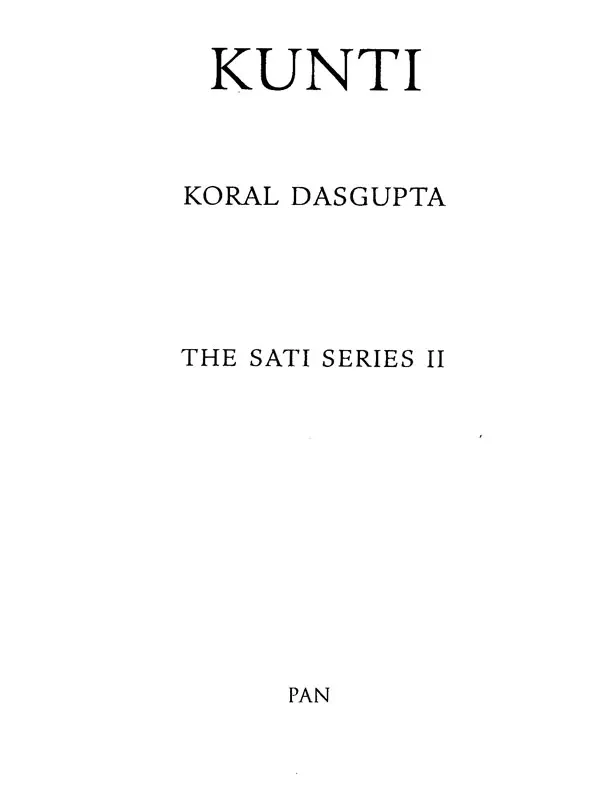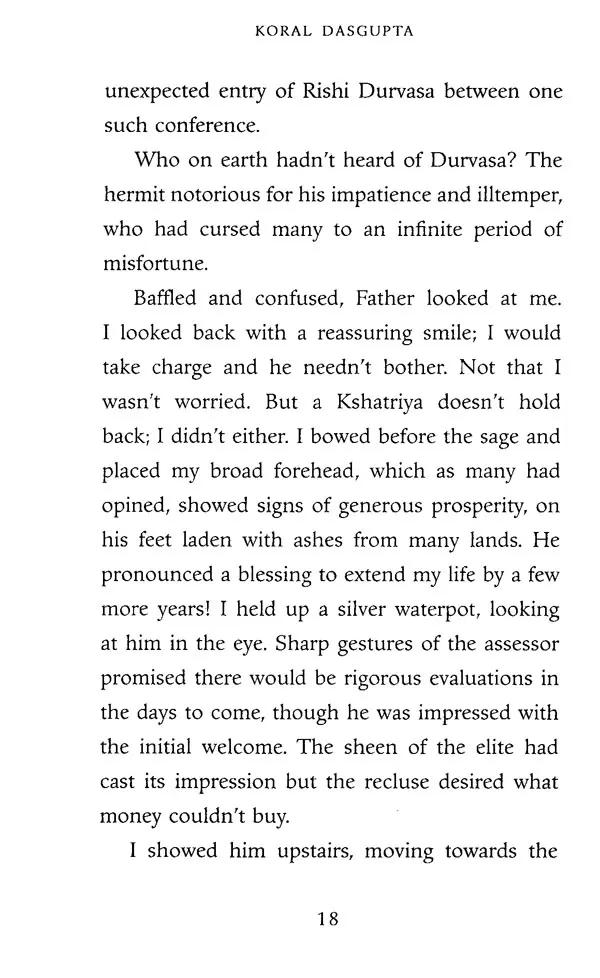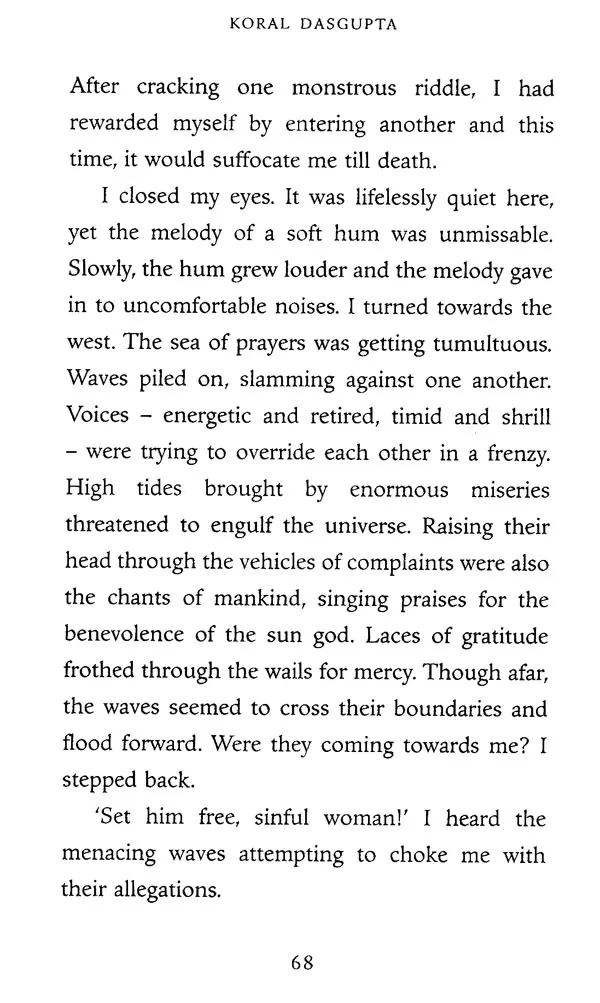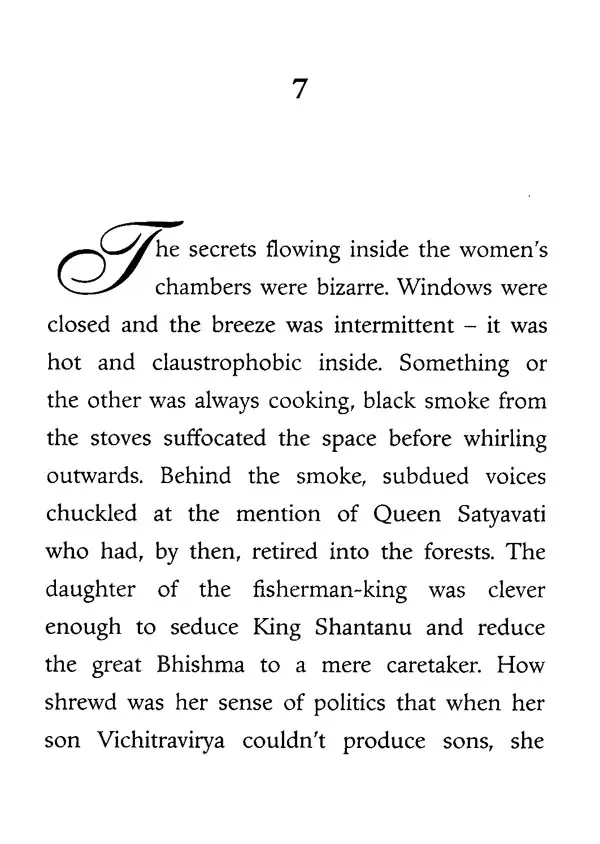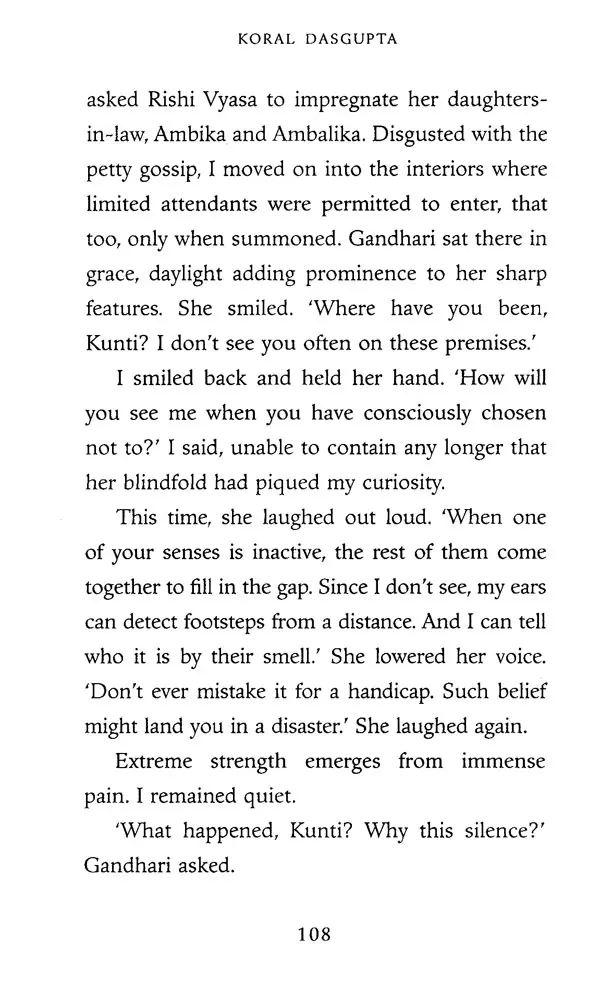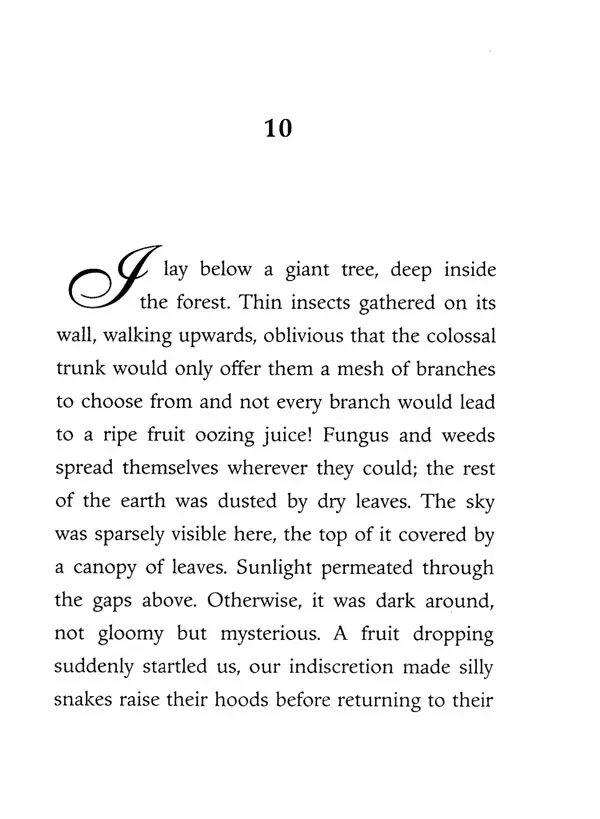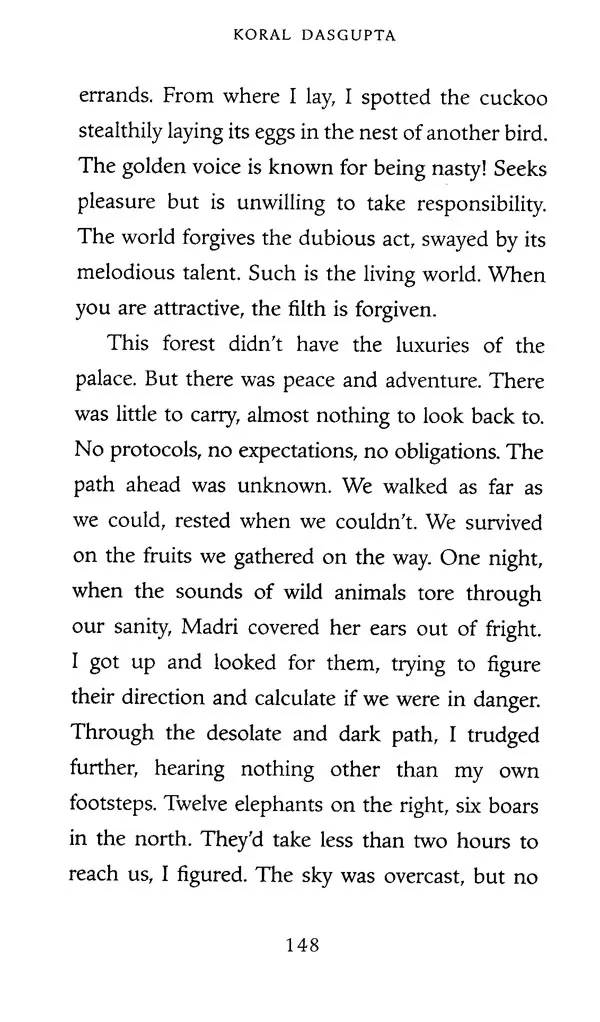
Kunti- The Sati Series II
Book Specification
| Item Code: | UAU579 |
| Author: | Koral Dasgupta |
| Publisher: | Pan Macmillan India |
| Language: | English |
| Edition: | 2021 |
| ISBN: | 9789390742172 |
| Pages: | 207 |
| Cover: | PAPERBACK |
| Other Details | 7.00 X 4.50 inch |
| Weight | 140 gm |
Book Description
Kunti, a rare matriarch in the Mahabharata and one of the revered Pancha Satis, holds an unforgettable position in the Indian literary imagination. Yet, little is known about the fateful events that shaped her early life.
Taking on the intricate task, Koral Dasgupta unravels the lesser-known strands of Kunti’s story: through a childhood of scholarly pursuits to unwanted motherhood at adolescence, a detached marriage and her ambitious love for the king of the devas.
After the remarkable success of Ahalya, the first book in the Sati series, Kunti presents a brilliant and tender retelling of a story at the heart of our culture and mythology.
In the Sati series, Koral Dasgupta explores the lives of the Pancha Kanyas from Indian mythology and reinvents them in the modern context with a feminist consciousness.
Praise for Ahalya ‘Koral Dasgupta gives voice, character and agency to an enigmatic and fascinating female figure from ancient Hindu lore’ PHILIP LUTGENDORF
Koral Dasgupta is an author, painter, entrepreneur and professor. A compulsive storyteller, she has authored six books, including five works of fiction and one non-fiction. The Sati series is based on Panch Kanya from Indian mythology. After Ahalya, Kunti is the second book in the series, which will be followed by Draupadi, Mandodari and Tara. Koral's fourth book has been optioned for screen adaptation. She is the founder of Tell Me Your Story, a cross-culture repository on the global perception of 'India'. Koral consults with educational and corporate organizations on content and communication projects, and she was included in the Holmes Report's Innovator 25 Asia-Pacific list, 2019.
The he Pancha Kanyas of Hindu mythology were Ahalya, Kunti, Draupadi, Mandodari and Tara - while the five Satis were Sita, Sati, Savitri, Damayanti and Arundhati. The distinction of two different titles arose primarily because various versions of the epics have taken the liberty to celebrate women as per the popular beliefs of an era and, of course, that of the translators. 'Sati' has been defined by a school of thought as the women's unconditional devotion towards and dependence on their men. It casts the women as loyal followers strongly supporting the vision of their men or helping them overcome social and emotional complications. These women are depicted as sacrificing and selfless, yet invincible in drafting their own position of strength and supremacy.
Thus, as per textual evidence, the Kanyas and Satis are different women. However, in the earliest versions, there is no mention of the Pancha Satis; they only talk about the Pancha Kanyas who are deemed as the Maha Satis. Even in regional interpretations, especially in some eastern and southern states of the country, this division is blurred. This could be due to the difference in the spread of the Mahabharata of Vedavyasa versus the dissemination of the Valmiki Ramayana. The former specifically mentions the Pancha Kanyas.
The Valmiki Ramayana talks about the Satis in terms of loyalty and physical chastity, and such women including Sita aren't restricted to only five. But it doesn't club them under the umbrella term, the Pancha Sati. In my own studies, I came across some scholarly assumptions that the Satis were reborn as Kanyas and research has tried to draw parallels!
Popular literature establishes that reciting the name of the Pancha Kanya can dispel sins, which again confirms the 'Sati' status of these women. Sati means pure, devoted and fair. In the Sati series, I shall follow this vision while retelling the stories of the five illustrious women - Ahalya, Kunti, Draupadi, Mandodari and Tara. In Ahalya, I mention the concept of the Pancha Kanya and admit towards the end that Sati is perhaps a different religious construct, but philosophically, they merge because both are representations of truth the personal truth of the women, for which they are answerable only to themselves, irrespective of external judgements or popular interpretations.
**Contents and Sample Pages**
